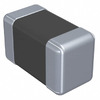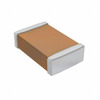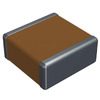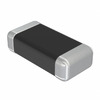What is Resistance
2023-11-14
2218
In such a conductor structure, the complex atomic arrangement is reminiscent of the puzzling bends and bumps on the mountain road. This is the "topography" of the current flow. Take a copper conductor, for example. Its atoms are very compact, which helps the current flow through it at a higher speed. It's a bit like a car traveling at a faster speed on the highway. The interaction between electrons and ions can be regarded as a "traffic regulation" restriction in the process of current flow. This effect introduces a blocking mechanism in the flow of electrons, similar to the restriction of car speed by traffic regulations. The purpose is Ensure safety and stability of flow or driving. Of course, these factors are inseparable from resistance. Taking lithium-ion batteries as an example, microscopic atomic structural complexity changes resistance levels, which in turn directly affects the battery's operating performance. This interaction between electrons and ions contributes to the generation of electric current inside the battery, but too high a resistance value may prevent the effective storage or release of electricity, thereby affecting the overall performance of the battery. Understanding these is a valuable insight for battery design and optimization. But in this microscopic world, besides the interaction between electrons and ions, what else is there?
Catalog
1. Understanding the Effects of Internal and External Factors on Resistance.
2. Mathematical model of resistance: Ohm’s law and its limitations.
5. Multiple factors affecting the resistance of the third: the effect of temperature on resistance.
10. The general importance of resistors in electronic technology and everyday applications.
There are not only the physical properties of the conductor itself and the interaction between electrons and ions, but also other external factors such as electromagnetic fields, temperature and humidity, which will also have a corresponding impact on the resistance. For example, under certain environmental conditions, increased humidity may cause changes in resistance, which further changes the path of current. In some high-temperature situations, such as a car's engine control unit, the resistance of the semiconductor may change as the temperature increases. This situation requires special design to adapt to various working environments. But all that is said is not said, if we do not have a suitable method to measure resistance. At this time, Ohm's law becomes a very practical measurement tool.

1. Understanding the Effects of Internal and External Factors on Resistance.
The function of a resistor is by no means limited to the fundamental restriction of current flow. More precisely, it acts as a multi-dimensional limiting element similar to that in a complex traffic system, covering multiple dimensions of influence from atomic structure, interaction of electrons and ions, to electromagnetic fields. Consider driving on a narrow, winding mountain road: Not only the shape and unevenness of the road can create driving challenges, but road friction, weather conditions, and even the performance characteristics of the vehicle itself can all affect your speed to varying degrees. Impact. Then, we took the inside of the conductor as the focus of the lens and analyzed the microscopic details in detail.
When exploring the complexity of conductor structures, the mystery of atomic arrangements we encounter is like the twists and turns of a mountain road, confusing and elusive. This exactly depicts the "topography" of electric current. Take copper as an example. Its atoms are compactly arranged, just like a car running at a faster speed on a wide highway. Copper conductors also help current flow at high speeds. The interaction between electrons and ions, this invisible "traffic control", sets up obstacles in the journey of electric current, such as traffic regulations that limit vehicle speed to ensure safe and stable driving.
Lithium-ion batteries are the leader in this field. The complexity of their microstructure is the key to affecting the resistance level, which directly affects the performance of the battery. The interaction between electrons and ions not only promotes the generation of current inside the battery, but may also hinder the effective storage or release of electrical energy due to excessive resistance, affecting the overall performance of the battery. These insights are extremely valuable in the process of battery design and optimization. However, at a deeper level in the microscopic world, besides the interaction of electrons and ions, what other unknown forces are at work?
The physical properties of the conductor itself and the interaction of electrons and ions are just the tip of the iceberg. Electromagnetic fields, temperature, humidity—these external factors also secretly affect resistance. For example, rising humidity may silently change the resistance, causing the current to bend in its path. At high temperatures, such as in car engine control units, the resistance of semiconductors fluctuates as the temperature rises. To cope with this change, special design is required to ensure adaptability to various environments. However, if the resistance cannot be accurately measured, all designs will be impossible. Therefore, the value of Ohm's law, this ancient and practical tool, is undoubtedly highlighted at this moment.
2. Mathematical model of resistance: Ohm’s law and its limitations.
Ohm's Law - This simple yet profound electrical equation, R = V / I, is more than just a method of measuring resistance. It is the culmination of centuries of scientific exploration and practical wisdom. In this equation, RR represents resistance, VV is voltage, and II represents current. In a nutshell, when the current through a resistor is one amp and the voltage difference across the resistor is one volt, its resistance is one ohm.
There are limits to the universality of Ohm's law, especially when we turn to the discussion of high-frequency and low-frequency circuits. For example, in high-frequency circuits, the effects of resistance go beyond DC resistance and involve complex interactions of capacitance and inductance. At this point, relying solely on Ohm's law is obviously not enough. For example, in radio frequency (RF) circuit design, the behavior of resistors often violates the basic assumptions of Ohm's law. Due to high-frequency currents, the relationship between resistance, inductance, and capacitance becomes more complicated, requiring more advanced analysis models such as Smith charts.
However, for nonlinear resistive components—such as diodes or transistors—Ohm's law shows clear limitations. Taking LED lights as an example, this device exhibits a clear nonlinear relationship between current and voltage. Once the voltage exceeds a certain threshold, the growth rate of current will quickly exceed the growth of voltage. This phenomenon can be attributed to the characteristics of LED as a non-linear resistive element.
Different types of substances determine their different limiting effects on current, especially at the microstructure level, this effect is even more significant. Take metal as an example: Because it is rich in free electrons, these electrons have a high degree of freedom of movement in the lattice structure of the metal. Thus, metals generally behave as low-resistance materials. Together, these free electrons form a phenomenon known as an "electron cloud," which, in conjunction with positive ion nuclei, forms the metal's solid microstructure. Unsurprisingly, this electron cloud model provides an explanation for the superior electrical, thermal and plastic behavior of metals. Comparing copper and aluminum, both are used in wire production due to their extremely low resistance. Although copper has lower resistance and stronger conductivity, aluminum is still used in certain environments—such as high-voltage transmission lines—because of its light weight and economical benefits. —is also widely used.
However, when the scale of matter is reduced to the nanometer level, everything changes dramatically: quantum effects gradually begin to dominate, affecting the behavior of resistors. At such a tiny scale, electron motion is no longer simply constrained by the laws of classical physics, but instead relies on quantum mechanics for more refined and accurate description and analysis. In the case of carbon nanotubes, the material demonstrates how quantum effects affect resistance at the nanometer scale. Carbon nanotubes, with their unique geometric structure and electronic properties, exhibit extremely low resistance and high conductivity, thus demonstrating a wide range of application potential in the fields of nanoelectronics and materials science.
The length of the conductor is undoubtedly proportional to the size of the resistance. To use a metaphor, imagine that electricity is water: the longer the conductor, the longer the pipe through which the water flows. As the distance increases, the resistance encountered by the current during transmission also increases accordingly. This effect is particularly evident in cable transmission across wide areas. Take cross-sea cables as an example. Their lengths can often reach hundreds or even thousands of kilometers, resulting in huge power losses. Faced with the increase in resistance caused by length, traditional solutions tend to use materials with lower resistance or increase the thickness of the cable to ensure power transmission.
The change in cross-sectional area poses a significant restriction on the free flow of current. Small area means big resistance. This becomes particularly critical in the design of microelectronic devices. Since the operation is at a microscopic scale, small cross-sectional adjustments may cause significant changes in resistance. Consider the heart of the computer, the central processing unit (CPU). It has a small conductor cross-section, so if heat accumulates, performance will be compromised. This is a big challenge. In a narrow space, a slight reduction in cross-section is enough to increase the resistance sharply, which directly affects the efficiency and stability of the circuit.
5. Multiple factors affecting the resistance of the third: the effect of temperature on resistance.
Temperature changes caused by weather fluctuations are closely related to the performance of electronic components. As temperature rises, the dynamic activity of atoms and molecules intensifies, characterized by more intense vibrations. Surprisingly, this vibration at the microscopic level affects the behavior of electrons traveling through materials—more precisely, increased vibration actually increases the likelihood of electrons colliding with atoms. As collisions increase, the electron flow rate decreases and the resistance increases.
Especially for high-precision electronic equipment, slight changes in temperature can have obvious effects. The equipment is such that it needs to be in a strictly temperature-controlled environment to ensure accurate operation.
Consider space satellites. The environment changes drastically, with temperatures swinging from near zero to hundreds of degrees. Under such extreme conditions, fluctuations in resistance value need to be carefully controlled by a highly complex thermal management system to ensure that satellite functionality is not compromised.
By studying how temperature affects atomic vibrations and electron collisions, and therefore resistance, we can hope to more accurately predict and control the performance of electronic devices in a wide range of temperature environments. This will not only improve the reliability of the device, but also open up a new page for applications such as thermal management.
In circuit design, resistors, with their various forms and connection methods, delicately shape the current dynamics and the overall function of the circuit. Imagine a series resistor scenario: here, the total resistance is simply the mathematical result of adding the resistances of the individual units. At this point, the total resistance of the circuit increases linearly with the amount of added resistance. Taking the electronic keyboard as an example, its keyboard mechanism adopts this principle; when a key is touched, a new resistor is immediately incorporated, causing subtle fluctuations in current and quietly changing the tone.
While series connections are relatively straightforward logically, parallel connections are mathematically more refined. In this case, simple addition is not enough to find the resistance value; instead, we must rely on more complex mathematical constructs to get an accurate result. A parallel connection gives a circuit multiple paths, allowing current to flow freely among them. Imagine that the electrical systems in our homes are usually connected in parallel. This layout prevents the current from being restricted by a single path, so when a home appliance fails or the power is cut off, other devices can still work normally.
The essence of circuit design is understanding how the way resistors are connected shapes the dance of current and voltage. The key is this understanding - it opens the door to improved performance, but also leads us to a realm of flexibility where designs can adapt to changing needs. In short, insight is crucial.
The effect of temperature on resistance cannot be underestimated, especially in high-temperature or high-precision environments—in such situations, the effect of the temperature coefficient of the material on resistance becomes particularly prominent. When it comes to metallic materials, high temperatures often cause resistance to rise. why? Simply put, rising temperatures cause the thermal motion of metal atoms to increase. This physical phenomenon increases the probability of electrons colliding with atomic nuclei, which naturally increases resistance. Take automotive electronic systems as an example: Under scorching heat, certain metal wires may face the risk of increased resistance due to rising temperatures, which may further affect the entire body and affect the overall performance of electronic devices such as sensors and computer modules. Therefore, designers need to anticipate this situation in advance and may prefer materials with lower temperature coefficients to avoid this problem.
However, for a fleeting moment, some semiconductor materials exhibit completely different properties from metals—their resistance decreases as the temperature rises. It’s confusing, but science explains it clearly: rising temperature means more valence band electrons are excited to the conduction band, thus increasing the number of electrons, allowing the current to flow more smoothly. Silicon-based semiconductor materials, for example, may exhibit this drop in resistance in high-temperature environments—such as in high-performance computing centers. This must be fully considered when designing.
Ultimately, knowing how to select the right temperature coefficient material based on various environmental variables and application requirements is a must-answer in the world of electronic engineering and circuit design. This contains profound wisdom from physics and materials science, which ensures that circuits can maintain their stable and efficient operating performance in complex environments.
When current passes through a resistor, a striking phenomenon occurs: part of the electrical energy is inevitably converted into heat energy, which is vividly called "power loss". Mathematical models elegantly capture this energy conversion as the equation P = I^2 * R, where P, I, and R represent power, current, and resistance, respectively. As you may have guessed based on this formula, the greater the resistance and current, the greater the power loss. A very real example? That is a microprocessor for high-performance computing or graphics processing, which may generate a lot of heat. Without proper cooling, this excessive power loss can cause the device to dangerously overheat and, in the worst case, be destroyed.
In a blink of an eye, we enter the territory of circuit design. In this complex process, the control of resistor power loss is undoubtedly crucial. Designers must think deeply about selecting highly heat-resistant resistors and other heat-dissipating components—such as heat sinks or fans—to prevent the circuit from running into the risk of overheating. Consider LED lighting systems. Although these lamps are more energy efficient than traditional incandescent lamps, their power loss is still a factor that must be carefully weighed. In order to reduce heat accumulation, some advanced LED systems use efficient heat dissipation methods such as heat pipes to control power loss caused by resistance.
Uncontrollable power loss not only threatens circuit durability and reliability, it also breeds safety hazards such as fires and short circuits of electronic components. This indicator requires sufficient attention during circuit design and maintenance. At the same time, this also requires interdisciplinary knowledge - we are talking about electrical engineering, thermodynamics, and even materials science - to work together in order to implement effective and feasible solutions.
In the complex chess game of high-frequency circuit design, treating a resistor simply as an energy sink is rather short-sighted. In fact, resistor is also a polyhedron with hidden trace capacitance and inductance properties. Astonishingly, as the frequency fluctuates, the resistance value also undergoes a silent evolution.
The capacitive and inductive properties of resistors are not unfounded. These properties may be by-products of the physical structure during manufacturing or may result from interactions with other electronic components. In low-frequency applications, these phenomena may be easily ignored. But once you step into the high-frequency realm, ignoring them will be fatal.
With high-frequency AC circuits as the core scenario, the actual behavior of resistors in these environments sometimes differs from its theoretical calculations, just like the difference in wireless communications and RF applications. Here, if the frequency response is left alone, the signal may suffer distortion and even the effective transmission distance may be limited.
Engineers in high-frequency applications face an extremely complex task: impedance matching to optimize circuit performance. This not only requires comprehensive consideration of components such as resistors, capacitors, and inductors, but also relies on precise measurement tools and simulation methods. In the current rapidly developing 5G communication network pulse, high-frequency characteristics are even more important. Poor resistor selection or neglect of the resistor's frequency response may cause signal interference or even cause data transmission delays, thereby impairing the operational quality of the entire network.
Yes, high-frequency characteristics are by no means leftovers in resistor selection and circuit design. Understanding this problem requires a comprehensive and multi-angle insight from the resistor itself to the overall performance of the circuit. This is not only a multi-disciplinary problem, but also requires engineers to have comprehensive intelligence and technical reserves.
10. The general importance of resistors in electronic technology and everyday applications.
Resistor is not only the cornerstone of circuit design, but its influence extends to multi-dimensional fields such as measurement technology, current regulation and system protection. This kind of comprehensive and in-depth mastery is undoubtedly a catalyst for the continuous progress of electronic technology for precise control of circuit performance.
Not only regulating base current, resistors are also showing their diverse uses in power system protection, precision measurement equipment, and even wearable technology. Take the electric vehicle battery management system as an example: the selection and configuration of resistors directly affect the charging and discharging efficiency and safety of the battery.
The complexity of resistance? Oh, it's so much more than just physical properties. In fact, resistance has complex interactions with multiple variables such as current, voltage, frequency, etc. This level of complexity highlights the fact that to truly unlock the deep mysteries of electronics, we need a multi-perspective and interdisciplinary interpretation framework.
From microscopic semiconductors to macroscopic power systems, the design and application of resistors are of great significance. For example, in modern computer systems, subtle changes in resistance can have a significant impact on processing speed and energy efficiency.
In short, mastering the nature of resistance can not only decipher the complexity of the electronic world, but also provide more precise operation and optimization strategies in practical applications. From the microphysical level to macroscopic system engineering, resistance is undoubtedly a focus worth pondering. This is not just a purely technical issue, in fact, it is a comprehensive problem that is intertwined with multiple disciplines and fields.
 ABOUT US
Customer satisfaction every time. Mutual trust and common interests.
ABOUT US
Customer satisfaction every time. Mutual trust and common interests.
function test. The highest cost-effective products and the best service is our eternal commitment.
Hot Article
- Are CR2032 and CR2016 Interchangeable
- MOSFET: Definition, Working Principle and Selection
- Relay Installation and Testing, Interpretation of Relay Wiring Diagrams
- CR2016 vs. CR2032 What’s the difference
- NPN vs. PNP: What's the Difference?
- esp32 vs stm32: which microcontroller is better for you?
- LM358 Dual Operational Amplifier Comprehensive Guide: Pinouts, Circuit Diagrams, Equivalents, Useful Examples
- CR2032 VS DL2032 VS CR2025 Comparison Guide
- Understanding the Differences ESP32 and ESP32-S3 Technical and Performance Analysis
- Detailed Analysis of RC Series Circuit
 Comprehensive Comparison of LR41 Battery and Battery LR41 Equivalent
Comprehensive Comparison of LR41 Battery and Battery LR41 Equivalent
2023-11-16
 What is a Resistor
What is a Resistor
2023-11-14
Hot Part Number
 QVS107CG220JCHT
QVS107CG220JCHT CL21F103ZBANNNC
CL21F103ZBANNNC CGA5L3X8R1C335K160AB
CGA5L3X8R1C335K160AB 06031A910GAT2A
06031A910GAT2A 2225CA223MATM6
2225CA223MATM6 TMK316C106KL-T
TMK316C106KL-T TAP335K016GSB
TAP335K016GSB TAP474K050HSB
TAP474K050HSB CRCW06031K00FKTA
CRCW06031K00FKTA CRCW06034K99FKEA
CRCW06034K99FKEA
- MAX3248EEAI
- SY55855VKG-TR
- VI-J6B-CW
- VI-B01-IX
- 6MBI100FA-060-01
- VI-270-02
- VI-810355
- VI-810676
- T491D156M035ZT7027Z032
- W3150A+
- LT1940LEFE#PBF
- LP8765RLX/NOPB
- SN74LVC1G11YZPR
- AD5061BRJZ-1500RL7
- MSP430F436IPZR
- ADUC836BCPZ-REEL
- S9S08DV128F2CLFR
- XC2V4000-5BF957C
- UJA1135HW/5V0Y
- PM8354A-NGI
- CY74FCT821ATQCTG4
- HD6413388CP10
- LC7385MK-TE-R
- LPC1113FHN33/201
- M74HC646RM13TR
- MT5325KLNJ
- PC28F640P30TF65
- S25FL256SAIHCO
- S99PL193JC0BFWUBO
- SP211CA/TR
- STC3MB10-T1
- HUL7203S15AU
- HY57V281620HCT
- SN9C2028AF002B
- CX86830-11Z
- PC48F4400P0TB0E
- HCNW-3120
- 7301Q
- LTC4364IMS-2